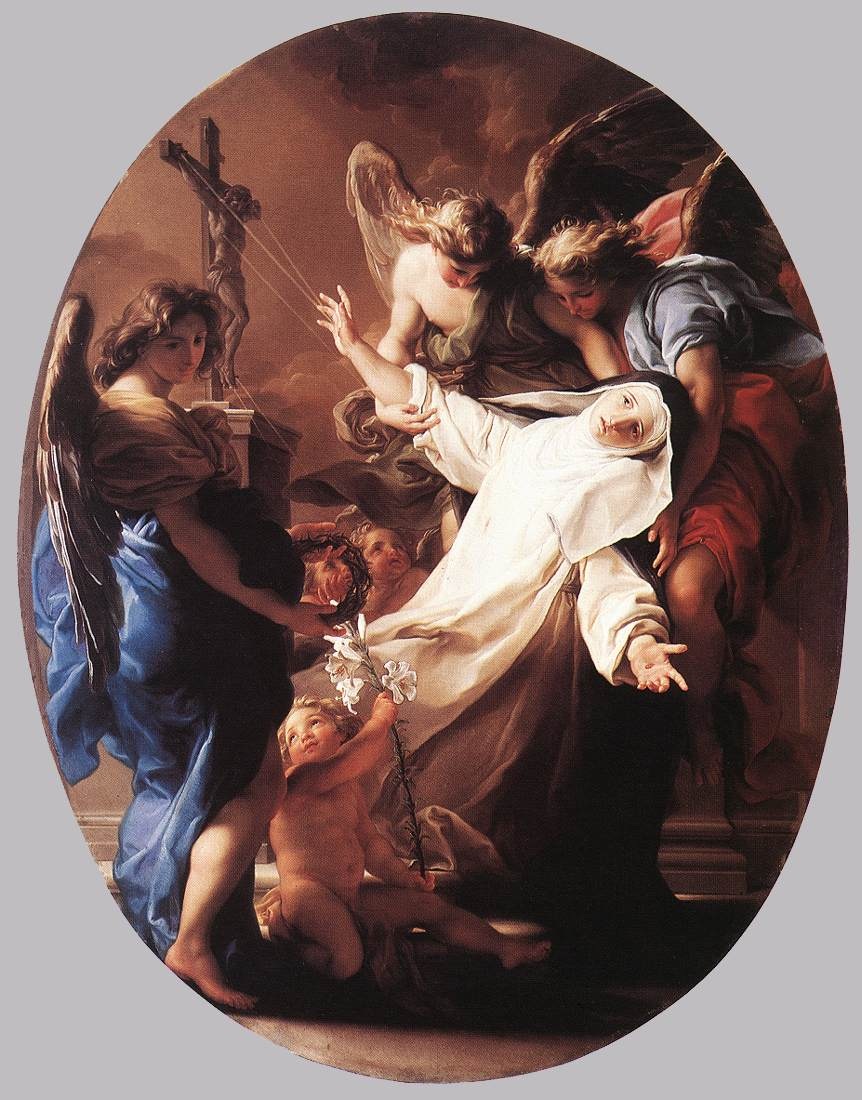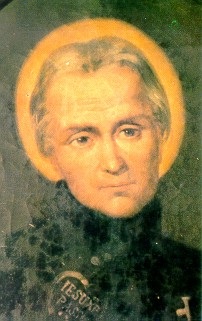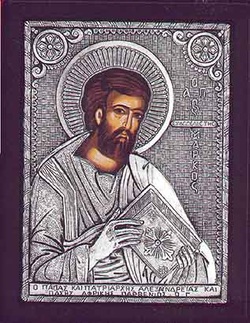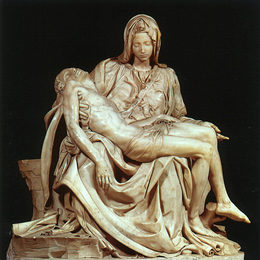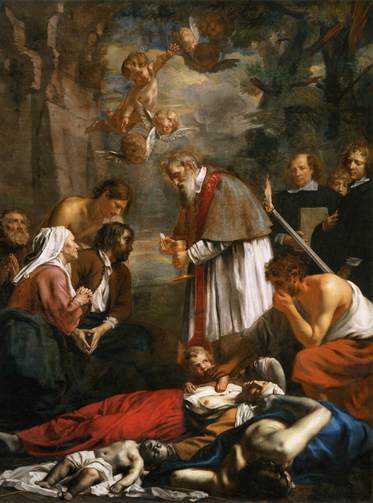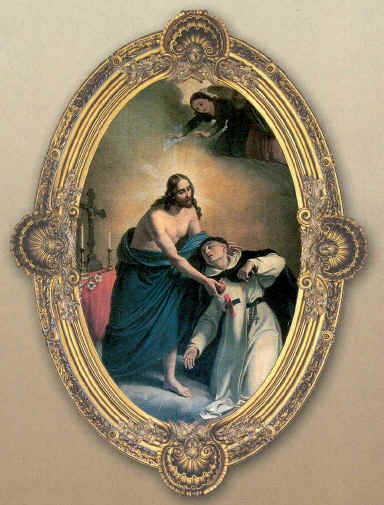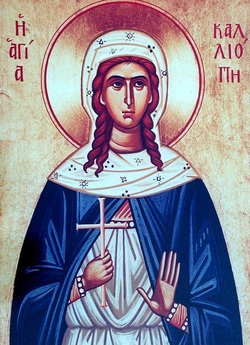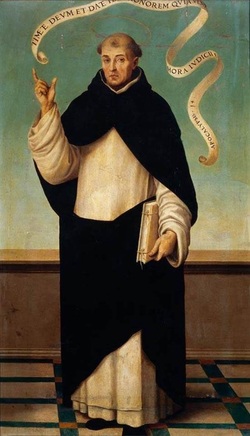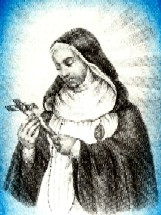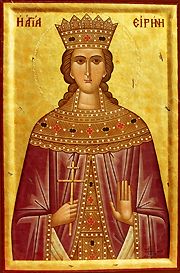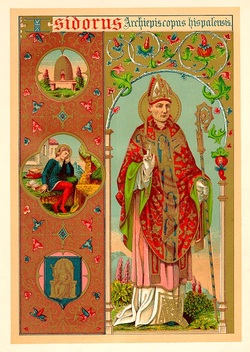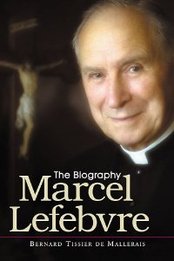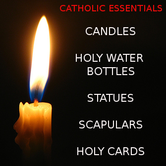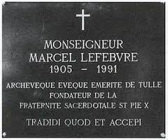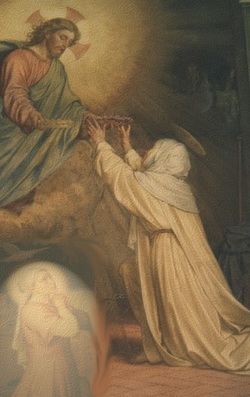
While she dwelt at Pisa, on a certain Lord's Day, after she had received the Living Bread which came down from heaven, she was in the spirit; and saw the Lord nailed to the Cross advancing towards her. There was a great light round about him, and five rays of light streaming from the five marks of the Wounds in his Feet, and Hands, and Side, which smote her upon the five corresponding places in her body. When Catherine perceived this vision, she besought the Lord that no marks might become manifest upon her flesh, and straightway the five beams of light changed from the colour of blood into that of gold, and touched in the form of pure light her feet, and hands, and side. At this moment the agony which she felt was so piercing, that she believed that if God had not lessened it, she would have died. Thus the Lord in his great love for her, gave her this great grace, in a new and twofold manner, namely, that she felt all the pain of the wounds, but without there being any bloody marks to meet the gaze of men. This was the account given by the handmaiden of God to her Confessor Raymund, and it is for this reason that when the godly wishes of the faithful lead them to make pictures of the blessed Catherine, they paint her with golden rays of light proceeding from those five places in her body which correspond to the five places wherein our Lord was wounded by the nails and spear.
The learning which Catherine had was not acquired but inspired. She answered Professors of Divinity upon the very hardest questions concerning God. No one was ever in her company without going away better. She healed many hatreds, and quieted the most deadly feuds. To make peace for the Florentines, who had quarrelled with the Church, and under an Ecclesiastical Interdict, she travelled to Avignon to to see the Supreme Pontiff Gregory XI. To him she shewed that she had had revealed to her from heaven his secret purpose of going back to Rome, which had been known only to God and himself. It was at her persuasion, as well as by his own judgment, that the Pope did in the end return to his own See. She was much respected by this Gregory, as well as by his successor Urban VI, who even employed her in their embassies. The Bridegroom took her home, when she was about thirty-three years old, after she had given almost countless proofs of extraordinary Christian graces, and manifestly displayed the gifts of Prophecy and miracles. Pope Pius II enrolled her among the Virgin Saints.
